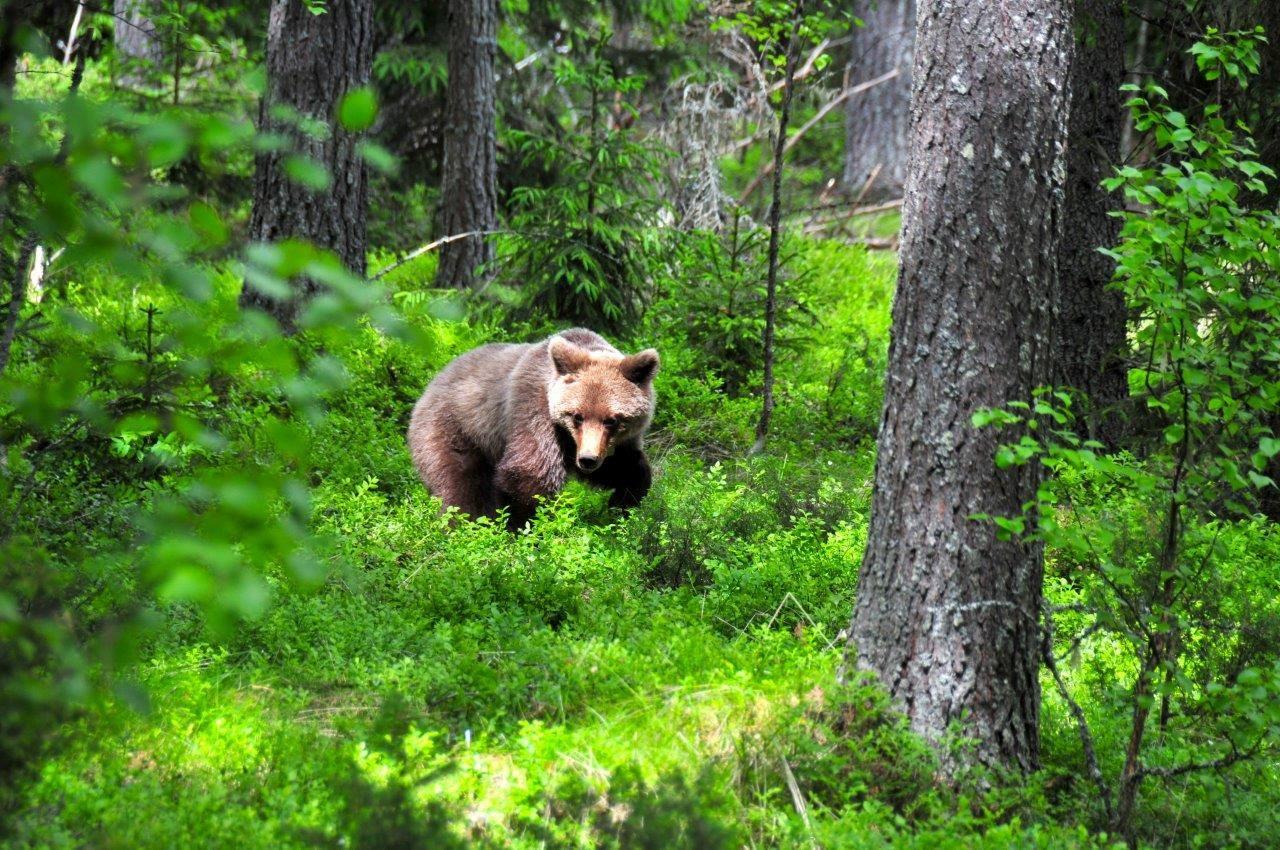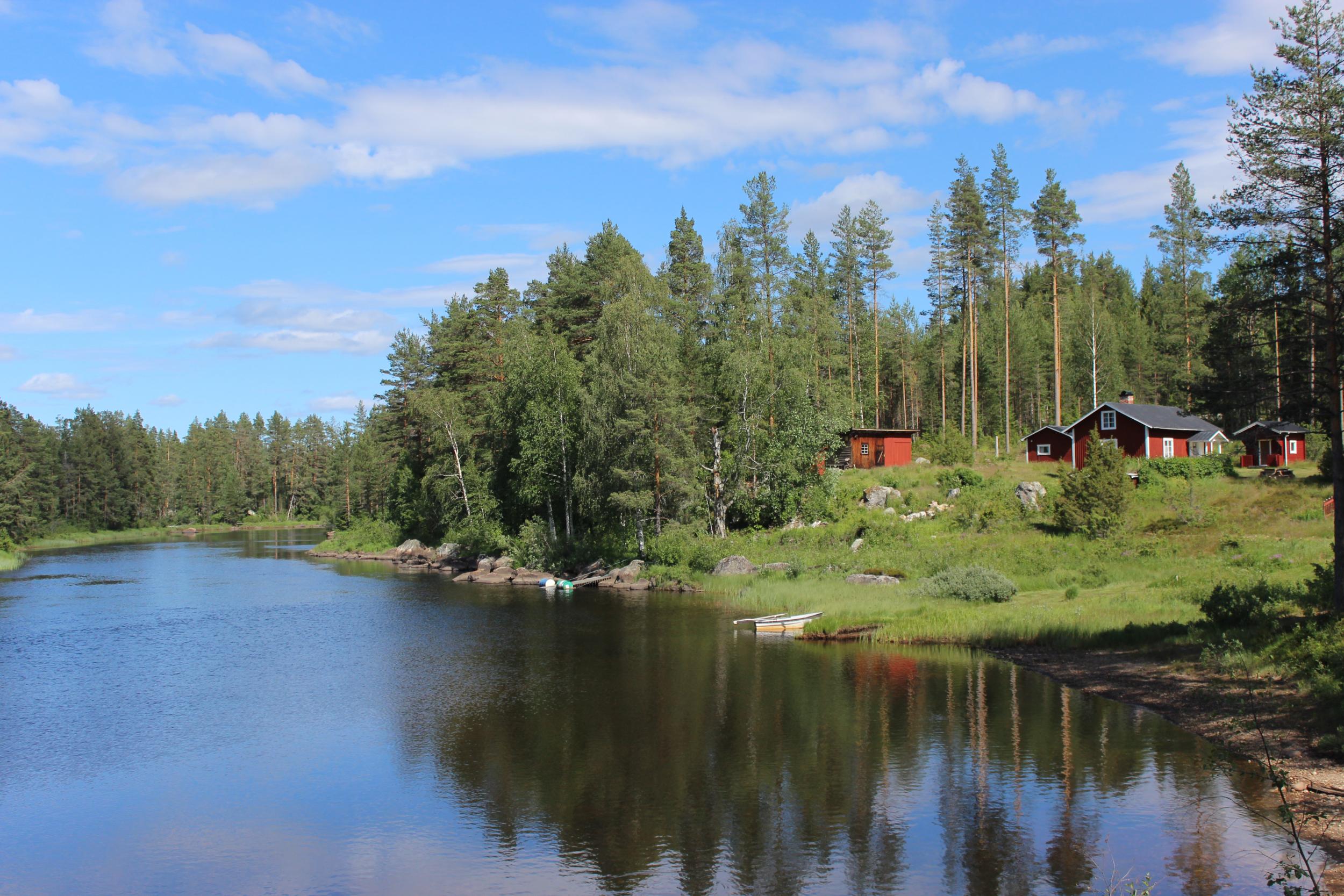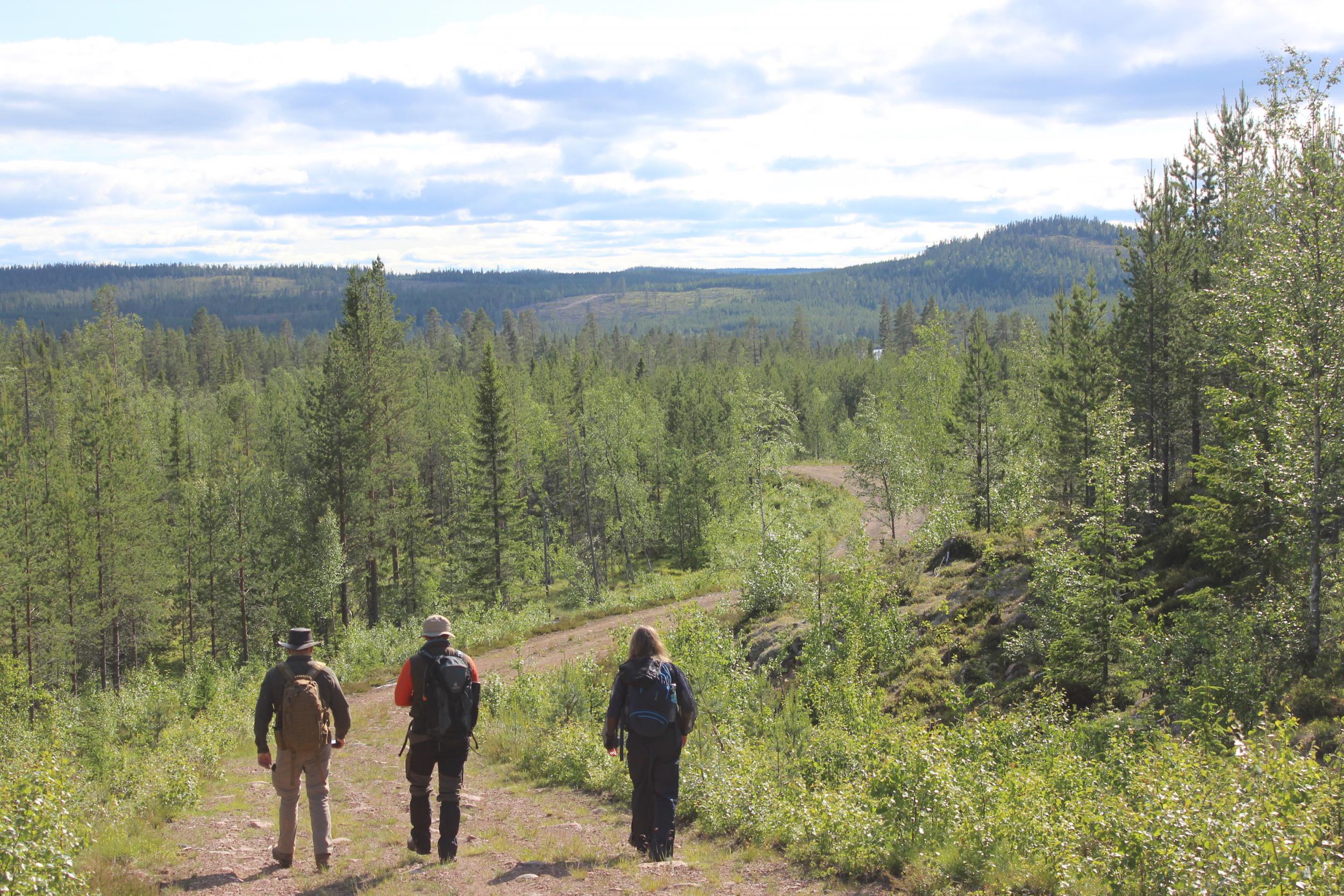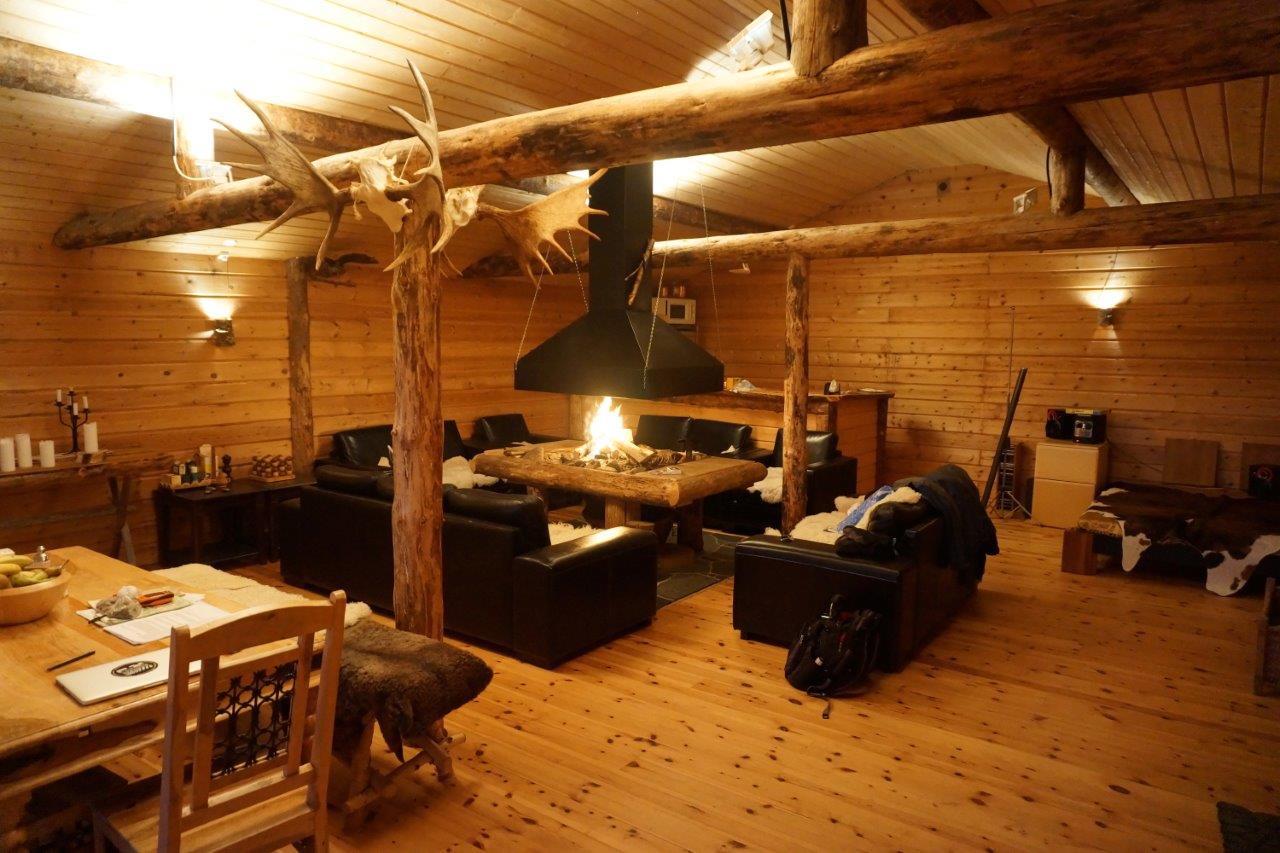On the trail of brown bears in Sweden
Chris Zacharia heads to Dalarna to track Sweden’s elusive brown bears

I’m standing on a drenched and steaming hillside. Behind me are moss-covered boulders; in front, a steep drop to swampy marshland. My legs are aching and my clothes are soaked.
Below, our team is gathered around the muddy banks, listening for a radio signal amid mosquito swarms. One of our bears, Tando, is missing, presumed dead. Was he killed by another bear? A moose? Or is this a grizzly murder by an unscrupulous hunter?
With one hand, Dr Andrea Friebe, our chief scientist, is waving a large antenna in slow, sweeping gestures. Her other hand holds a receiver to her ear, listening for the beeping pulse of the missing bear’s transponder. Andrea’s telemetry confirms what we’re all thinking: whatever remains of Tando is in that bog.
To my amazement, we don’t give up. Instead, Andrea takes off her coat, rolls up her sleeves, and plunges her arm into the dung-coloured water. We’re shocked into action: Cyril seizes a spear-sized stick and begins dredging the stagnant ditch; Ben unhooks his wristwatch, his hand disappearing beneath the sooty surface.
At first, nothing: just the swamp, the radio signal’s beeping, and the dripping of raindrops from pine needles.
And then, like a rabbit from a top hat, Ben’s arm emerges from the blackened bog with what is unmistakably a cranium. Never was a bear’s skull greeted with such joy. It’s a collective outpouring, all of us looking from face to face in triumph, the culmination of a hard day’s trudge and tribulation.
We’re collecting data for Sweden’s brown bear project, which protects bears and their environment. I’m here with Biosphere Expeditions, a conservation charity connecting wildlife projects around the world with volunteers who fancy being citizen scientists.
A bucolic smattering of huts and cabins serves as the project’s headquarters and our home for the week. Here, Andrea and her team work year-round to understand bear habits and habitats – but with funding low, the citizen scientists provided by Biosphere perform vital frontline work.

Each morning, Andrea gives us the coordinates of suspected dens – shelters that bears build in winter to sleep the season away. Some are made of soil, others of stone or spent anthills; all of them are different. Armed with a sackful of compasses, relascopes and measuring tapes, we branch off in twos and threes through Sweden’s great, green wilderness seeking these treasure chests of bear data.
Dalarna County is quintessentially Swedish. If you were filming an advert showcasing Sweden’s natural beauty, you’d do it right here, among the Falu-red huts, glassy lakes and great tribes of pine and spruce. It’s also where many brown bears live.
Since the king of Sweden declared them state property in 1927, numbers have been increasing. Their population is fragile, however. Without scientific evidence, it’s all too easy for hunters and loggers to justify destruction. And as well as being beautiful creatures, bears could have a lot to teach us.
“Bear hibernation is fascinating” says Andrea. “How do they hibernate for so long? If we could understand it, astronauts might be able to harness it for space travel. Nasa are interested in our work.”
Before we get too excited about space bears, Biosphere’s founder, Matthias Hammer, brings us back to earth. “We’re not a safari company,” he says. “You probably won’t even see a bear.”

A man-mountain Ross Kemp/Heston Blumenthal lookalike, Matthias’s life is an anthology of back-to-back childhood dreams. He came to the UK to study biology, becoming the first German to row for both Oxford and Cambridge. After rising through the army, he founded Biosphere Expeditions in 1999, contributing to scientific conservation projects worldwide.
He’s the kind of bloke you’d want by your side whether climbing Everest or just cleaning out your fridge’s vegetable drawer. As amateurs trekking through tough terrain, in pursuit of a powerful land mammal’s nesting sites, Matthias’s unswerving dedication to our survival is just what we need. His steady stream of Dad jokes is merely a bonus.
Two days of training, and we’re ready to collect data independently, citizen scientists flying the nest. Our first day is typically adventurous. We plough through pine forests with silver scimitar branches. We break through to a clearing, only for it to reveal a mountain. The summit is a desolation of tree stumps, a war zone of spent bark and crushed wood.
Another hundred metres and the landscape changes again: an idyllic woodland and meadow envelops us, the sunlight dribbling through the trees like honey. In the middle sits a bear den round as a beehive. Like children in a fairytale, we creep towards the den, wielding instruments bright and red as Christmas toys.

After another day spent wading through knee-high shrubbery, gingerly crossing quagmires, and fighting clouds of midges, we debrief in the “fire room”. It’s an exquisite, rustic clubhouse with a vast open fire, leather sofas, and that inviting ski-lodge atmosphere of exhausted camaraderie. Each group relates their adventures... We saw a bear! A moose! A den so big we all fit inside!
The blaze of conversation well stoked, we sit at a communal wooden table for dinner. Elfie, our chef and Matthias’s old neighbour (”I’ve known him since he was a boy”), serves us vegetarian suppers, which we share like boy scouts. Just before midnight, the sun pretends to set. The horizon blazes petrol blue; twilight descends without ever quite maturing into night.
It’s our final morning, and we’re on the trail of Klummy, a mother bear whose den is on a lake island. Surely she crossed while the water was frozen? But Andrea corrects us: bears build their dens before the water freezes.
Equipped with stand-up paddleboards and optimism, we strip down to our underwear and stroke the surface with our oars. I’m sitting at the front, officially “watching for rocks” but really just staring in amazement at the panoramic triptych of water, island and sky.
Once ashore, we race through the trees until we see the den. Rock slabs the size of wardrobes lie slanted at an angle, with a narrow gap in the middle. This slender crevice drew Klummy and her three cubs across a kilometre of October lake, seeking shelter from the Scandinavian winter.
Working together, we address each category like an old friend: are the trees birch, pine or spruce? Is the ground layer moss or lichen? Andrea watches with a scientist’s quiet pride. Clipboards are filled, and soon we’ve mapped our final den. There’s a poignancy as we turn to leave: once, we were citizen scientists; soon we will just be citizens.
That night, we share our expedition stories around the fire one last time. Jan sums up the mood perfectly: “Considering we’re 10 adults who spent the whole week cowering from the rain, surrounded by mosquitoes and staring at s*** – that was really fun!”
Travel essentials
The next brown bears expedition in Sweden with Biosphere Expeditions runs from 15 to 22 June 2020. The eight-day trip costs €1890 (£1,652/$2,153) and excludes flights.
Join our commenting forum
Join thought-provoking conversations, follow other Independent readers and see their replies
Comments
Bookmark popover
Removed from bookmarks